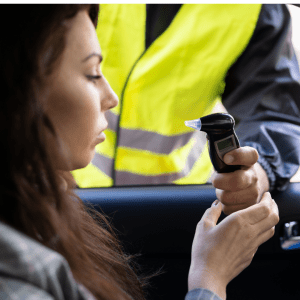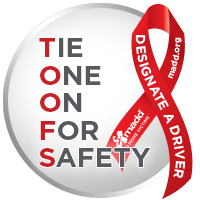Impaired Driving Prevention Month: Healthcare Outreach Toolkit

Key Facts:
- In 2022, 13,524 people died in alcohol-impaired-driving crashes; 31% of all traffic deaths (NHTSA).
- THC was detected in 25% of seriously injured drivers in Level I trauma centers (CDC).
- Young adults (ages 21-34) account for nearly half of impaired-driving fatalities during the December holiday period (NHTSA).
- Every $1 invested in ignition-interlock programs saves an estimated $4 in medical and societal costs (RAND).
Editor's Note
This article is part of the BHM Healthcare Awareness Series, designed to provide quick, ready-to-use content and links to official resources for internal staff communications, patient education, and social media.
Feel free to copy, adapt, and share.
Observation Date
December
History & Impact
National Impaired Driving Prevention Month was first proclaimed by the U.S. President in 1981 to spotlight the toll that alcohol- and drug-impaired driving takes on public health and safety. Each December, agencies such as the National Highway Traffic Safety Administration (NHTSA) and the Centers for Disease Control and Prevention (CDC) amplify campaigns like Drive Sober or Get Pulled Over and If You Feel Different, You Drive Different. Health systems, public-safety partners, and community coalitions use the observance to promote evidence-based countermeasures (sobriety checkpoints, ignition-interlock laws, prescription-drug take-backs, and ride-share discounts) that reduce crashes, injuries, and deaths.
Why it Matters
- Impaired driving remains a top three cause of U.S. roadway fatalities, costing an estimated $68 billion annually in medical care, productivity losses, and legal expenses.
- Healthcare executives can influence prevention by aligning trauma-center outreach, employee-wellness policies, and community benefit dollars with proven traffic-safety strategies.
Quick Actions for Your Organization
For Leadership
Adopt or update a Drug- and Alcohol-Free Workplace policy that covers prescription impairing medications and recreational cannabis.
Allocate Community Health Needs Assessment (CHNA) funds to support local sobriety-checkpoint operations or ride-share voucher programs during peak holiday hours.
Form a data-sharing partnership with state highway-safety offices to monitor crash-injury trends and evaluate ROI on prevention initiatives.
For Implementation Teams
Publish daily “Drive Sober December” tips on intranet screens and waiting-room monitors.
Embed SBIRT (Screening, Brief Intervention, and Referral to Treatment) prompts in emergency-department EHR templates for crash-injury patients.
Distribute wallet-card BAC charts and QR-coded ride-share coupons at discharge, flu-shot clinics, and holiday-party catering pickups.
Resources
Ready-to-Use Assets
The following links provide resources & information for creating internal or external campaigns to support or promote this healthcare observance. Please vet these resources for alignment with your organization.
- NHTSA – Impaired Driving Prevention Month
- CDC Impaired Driving – fact sheets, sobriety-checkpoint implementation guide, state policy data
- All Rise – Impaired Driving Solutions Toolkit
Talking Points
Copy & Paste Friendly
- “Every day 37 people die in the U.S. from drunk-driving crashes. Let’s make this December zero. #ImpairedDrivingPrevention”
- “Cannabis and prescription meds can slow reaction time just like alcohol. Plan a sober ride before celebrations begin.”
- “Healthcare leaders: ignition-interlock coverage in employee health plans can cut repeat offenses by 70%.”
Disclaimer: Please verify all information, usage rights, and related guidelines with the official observance organizers and your organization’s policies to ensure proper alignment.
Frequently Asked Questions (FAQ)
Q1. How can we measure impact if we sponsor ride-share vouchers to participate in Impaired Driving Prevention Month?
Track redemption codes, compare local DUI arrest data year-over-year, and calculate estimated crashes averted using NHTSA cost-benefit tables.
Q2. What metrics for an Impaired Driving Prevention Month campaign should appear on board dashboards?
Monthly alcohol- or drug-related crash admissions, SBIRT completion rates, employee assistance program (EAP) self-referrals, and community engagement impressions.
Q3. What are the first steps to launching a National Impaired Driving Prevention Month campaign across our system?
Form a cross-functional task force (trauma services, employee health, marketing, community relations). Use NHTSA’s “Drive Sober or Get Pulled Over” planner to set goals, timelines, and target audiences. Map out a 4-week content calendar that pairs internal channels (intranet banners, leader huddles, EHR pop-ups) with external outreach (social posts, local news interviews). Secure executive sponsorship for budget items such as ride-share vouchers or checkpoint signage, and assign metrics owners for SBIRT completions, voucher redemptions, and campaign reach to report mid-month and post-event.
Partner with BHM Healthcare Solutions
With over 20 years in the industry, BHM Healthcare Solutions is committed to providing consulting and review services that help streamline clinical, financial, and operational processes to improve care delivery and organizational performance.
We bring the expertise, strategy, and capacity that healthcare organizations need to navigate today’s challenges – so they can focus on helping others.
Are you ready to make the shift to a more effective process?

